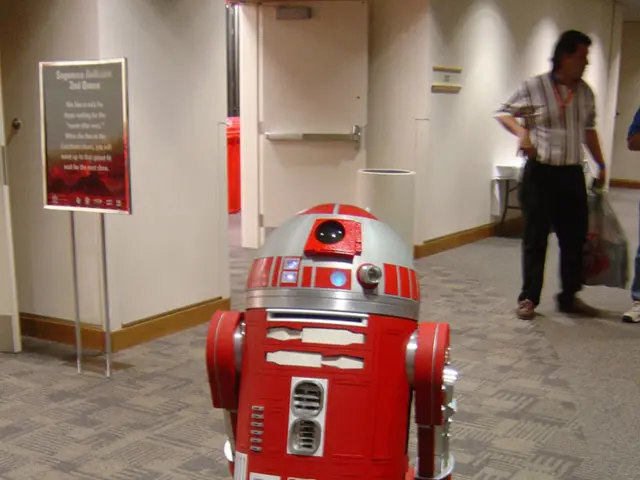"Footage reveals China's humanoid robot subjected to extreme 'violence trial'"
Unitree Robotics, a Chinese manufacturer, has made waves in the robotics industry with its latest creation, the G1 humanoid robot. A video of the G1 robot, showcasing its resilience and agility, has recently gone viral on YouTube.
The G1 robot, known for its lightweight frame and flexibility, has been designed with advanced AI capabilities. Through imitation and reinforcement learning, the G1 can observe human actions and replicate them with agility. In the viral video, the robot is seen kicking the air before slipping on a carpet and collapsing to the ground, but quickly recovering. Despite the unusual demonstration, this was the only fall the robot suffered throughout the video, and it appeared to be caused by the surface beneath its feet rather than the kicks themselves.
The video, which fits into a long tradition of balance and durability demonstrations in robotics, showcases the G1's impressive resilience. The robot withstands roughly nine kicks from the demonstrator, coming from various directions, without losing its balance or posture. This is a testament to the robot's robustness and its ability to recover from external forces.
The G1 robot is equipped with low-inertia, high-speed Permanent Magnet Synchronous Motors (PMSM) across its joints, paired with a dual encoder system that delivers precise feedback. The robot's movements are governed by a whole-body control framework, which coordinates all joints simultaneously as one dynamic system. Together, these inputs constantly update the G1's internal model of its environment and physical state, helping it react quickly to external forces.
For spatial awareness, the G1 relies on 3D LiDAR, depth cameras, and an Inertial Measurement Unit (IMU) on its torso. This technology allows the G1 to navigate its surroundings with ease and precision.
The G1 represents an attempt to rival the achievements of Boston Dynamics' Atlas, long considered the benchmark for agile, dynamic humanoid robots. While the G1 is not designed for combat, it is intended for affordability and accessibility in research and light industrial work. Its small size and AI-powered mobility give it versatility.
The video of the G1 robot's performance has drawn attention for its unusual demonstration of the robot's resilience. However, some commentators on YouTube have expressed sarcasm and warnings about the potential threat posed by advanced robots like the G1. It is important to remember that these robots are tools, designed to assist humans in various tasks, and not a threat to humanity.
The demonstration, while it may have seemed harsh, is a common method among manufacturers and roboticists to evaluate a robot's balance and resilience. The G1's impressive performance in the video serves as a testament to the advancements in robotics technology and Unitree Robotics' commitment to pushing the boundaries of what is possible.








